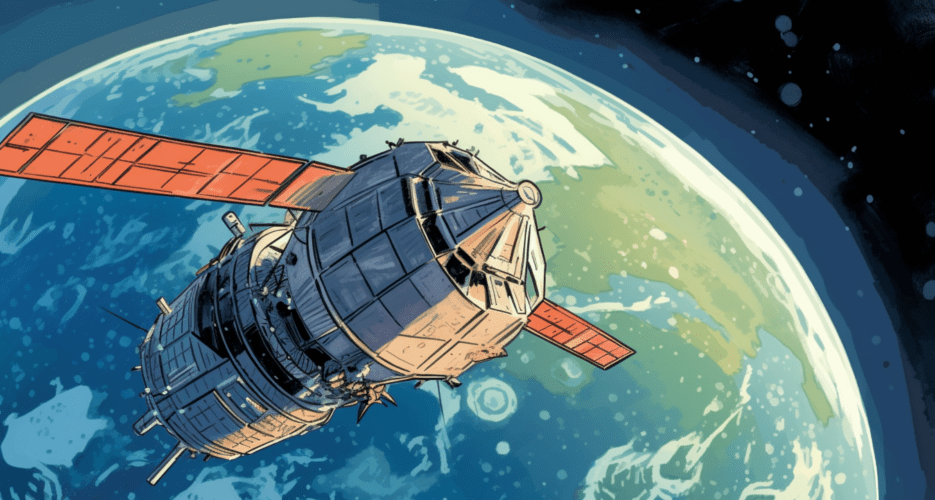AI could help Seoul quickly improve its intel and recon capabilities, but major technological limitations remain
The persistent nuclear and missile threat from North Korea continues to drive South Korea to modernize its military, and while the Yoon administration has largely stuck to Seoul’s long-standing approach, it has shown an increased willingness to explore new technologies to offset the DPRK’s rapid weapons advances.
Seoul’s comprehensive strategy for addressing the North Korean threat currently encompasses a four-pronged approach. Three of these prongs are well known as part of the three-axis system: the preemptive Kill Chain, the retaliatory Korea Massive Punishment and Retaliation (KMPR) plan and Korea Air and Missile Defense.
The fourth prong — enhancing intelligence, surveillance and reconnaissance (ISR) capabilities — is not formally included alongside the three-axis system. But Seoul has implicitly acknowledged that ISR is an area in need of improvement by making it a primary short-term focus, including by looking for ways to implement emerging technologies like artificial intelligence.
There remain significant limitations to the military application of such new technologies, however, that will make it difficult for South Korea to avoid relying on conventional capabilities like missiles for now.
HIDE AND SEEK
The strategic dynamic between the two Koreas can be conceptualized as a classic “hider-finder” problem: In its quest for a survivable nuclear force, North Korea has sought to communicate that it is developing a vast and diverse array of strike capabilities, including dual-capable systems.
During wartime, these systems will be concealed and hidden, placing the onus on Seoul and Washington to find and destroy as many systems as possible to diminish Pyongyang’s warfighting ability and limit damage to South Korean territory.
This effectively amounts to a “conventional counterforce” strategy, in which a non-nuclear, technologically advanced South Korea will strive to employ all available means to disrupt, destroy and degrade North Korea’s nuclear force.
While the three-axis system remains central to the Yoon administration’s updated Mid-Term Defense Plan, South Korean defense officials privately acknowledge that ISR will be crucial. Regardless of how precise and capable Seoul’s Hyunmoo missiles become, they will have limited utility without accurate ISR inputs for targeting purposes.
Resolving this issue solely through technology is incredibly challenging, if not intractable, given the level of confidence that Seoul seeks. One of the fundamental lessons of recent decades is that even technologically unsophisticated adversaries can cheaply and effectively pursue force survivability.
U.S. efforts to find and destroy Saddam Hussein’s mobile missiles during the first Gulf War serve as a prominent example: The U.S. Air Force did not destroy a single al-Hussein short-range ballistic missile launcher during that war, despite the availability of relatively high-fidelity ISR data in some instances.
In pursuit of this goal, Seoul has several ambitions. Among the most notable are its plans for space, a domain that is currently underexploited.
South Korea intends to launch military reconnaissance satellites, an initiative that dates back to the Moon administration and the 2020 abrogation of the U.S.-ROK Revised Missile Guidelines’ restrictions on solid-propellant space launch vehicles. Space-based optical satellites will enable South Korea to reduce its reliance on the U.S. for strategic situational awareness capabilities.
EMERGING TECHNOLOGIES
Apart from ISR, the Yoon administration’s most notable contribution to South Korea’s broader, longstanding defense procurement strategy has been its keen interest in emerging technologies.
AI, currently a subject of tremendous global hype, is included on this list. Traditionally, ISR inputs have required interpretation by human analysts. For instance, human analysts must analyze satellite images to determine whether objects are likely nuclear-armed missile launchers or large agricultural vehicles.
AI could potentially excel at this task, where human analysts might otherwise struggle — or so goes the assumption within several military organizations worldwide, including South Korea’s.
However, AI is unlikely to be a panacea for Seoul’s targeting woes with North Korea. While AI may be able to produce analytical conclusions from ISR inputs at rates far exceeding those achievable by human analysts, it will still be susceptible to false positives.
The current state of AI technology appears to have limited potential value for meeting Seoul’s defensive needs. Consequently, Seoul will also explore other technologies, including non-kinetic means of interfering with North Korea’s military capabilities and command and control systems, such as cyber and electronic warfare systems.
IF IT AIN’T BROKE
The traditional components of Seoul’s conventional counterforce strategy — precise ballistic and cruise missiles and layered missile defense — remain a focus under the Yoon administration.
The Defense Acquisition Program Administration (DAPA), an executive branch under the ROK Ministry of National Defense responsible for overseeing defense capability improvement projects, recently approved over $4 billion in spending for a new long-range surface-to-air missile (L-SAM II) and a Block-III variant of the mid-range surface-to-air missile (M-SAM) system.
While Seoul acknowledges that missile defense will not be cost-effective in nullifying a rapidly growing North Korean missile arsenal, the plan for these systems primarily aims to limit damage against critical high-value targets that Pyongyang may intend to hold at risk, such as airfields, ports and command and control nodes.
Reportedly, L-SAM II will also feature a glide-phase interception capability, a response to North Korea’s growing investments in endoatmospheric gliding systems, including aeroballistic missiles like the KN-23.
The centerpiece of Yoon’s five-year defense plan for 2023 to 2027 remains the three-axis suite of capabilities. With the ROK government planning to spend about $247 million (331.4 trillion won) over this period, Seoul will seek to maintain the initiative as North Korea continues its nuclear modernization programs.
For the foreseeable future, South Korea will not back down from its conventional counterforce ambitions against Pyongyang.
Edited by John Lee
The persistent nuclear and missile threat from North Korea continues to drive South Korea to modernize its military, and while the Yoon administration has largely stuck to Seoul’s long-standing approach, it has shown an increased willingness to explore new technologies to offset the DPRK’s rapid weapons advances.
Seoul’s comprehensive strategy for addressing the North Korean threat currently encompasses a four-pronged approach. Three of these prongs are well known as part of the three-axis system: the preemptive Kill Chain, the retaliatory Korea Massive Punishment and Retaliation (KMPR) plan and Korea Air and Missile Defense.
Get your
KoreaPro
subscription today!
Unlock article access by becoming a KOREA PRO member today!
Unlock your access
to all our features.
Standard Annual plan includes:
-
Receive full archive access, full suite of newsletter products
-
Month in Review via email and the KOREA PRO website
-
Exclusive invites and priority access to member events
-
One year of access to NK News and NK News podcast
There are three plans available:
Lite, Standard and
Premium.
Explore which would be
the best one for you.
Explore membership options













